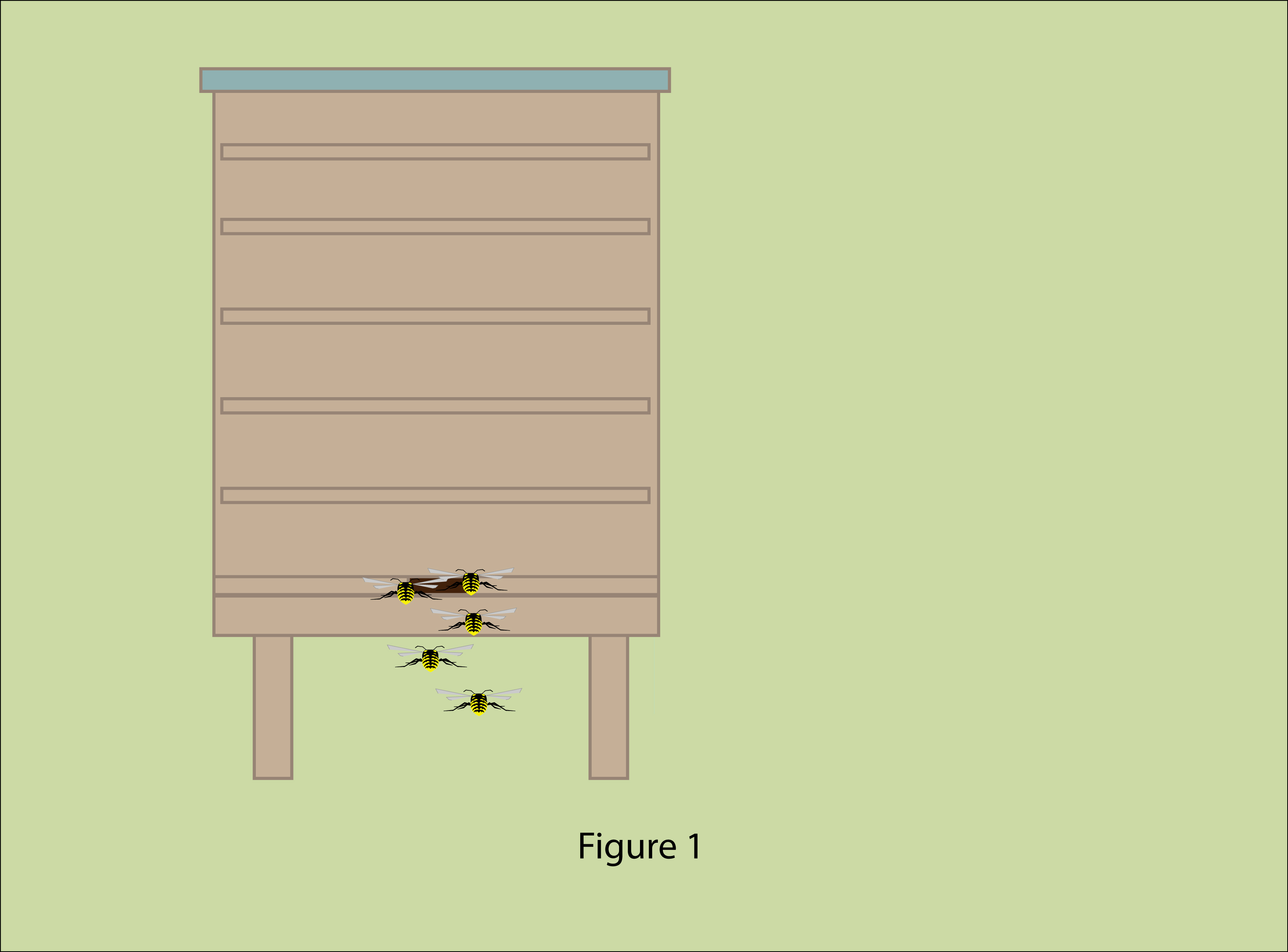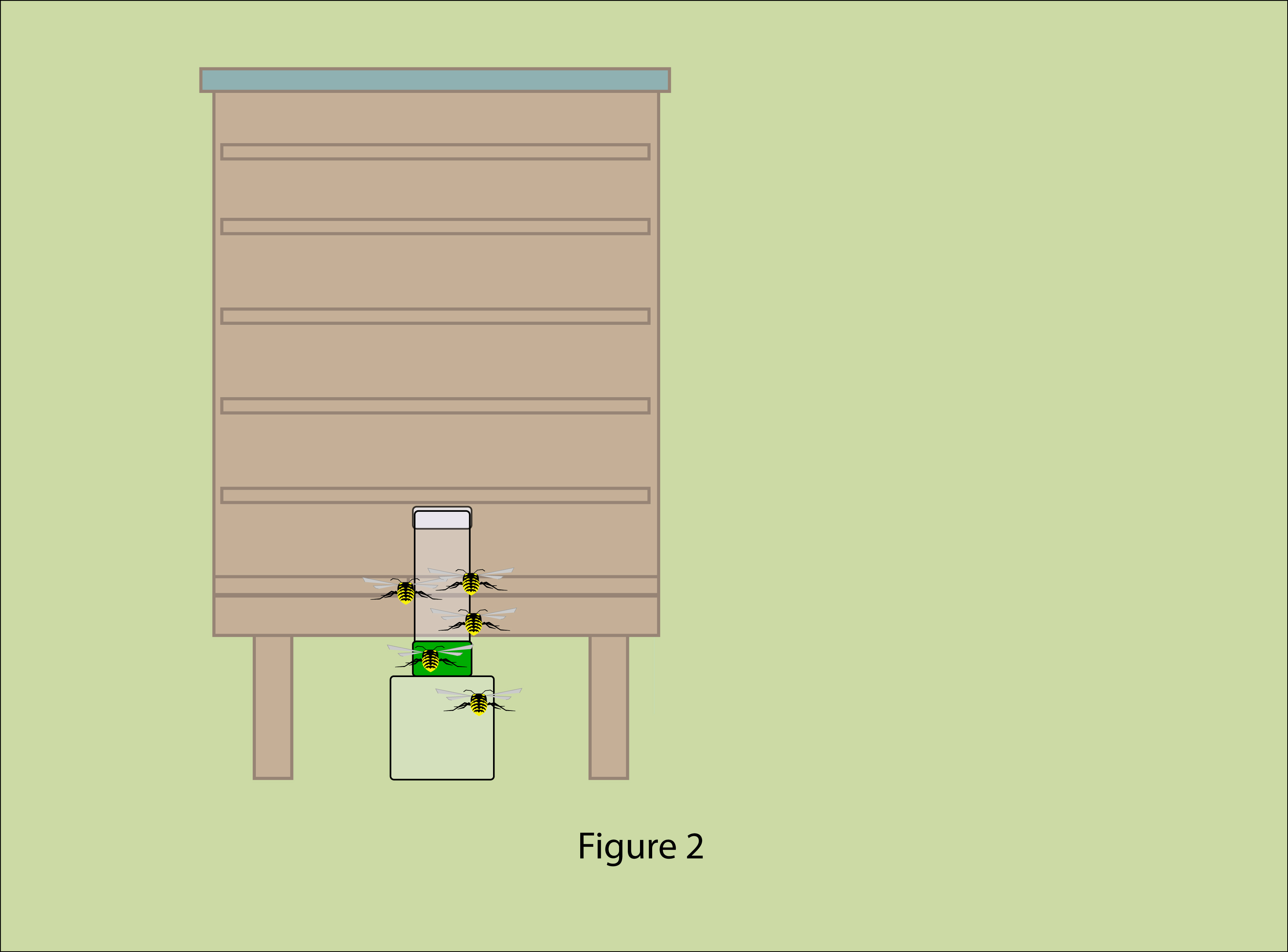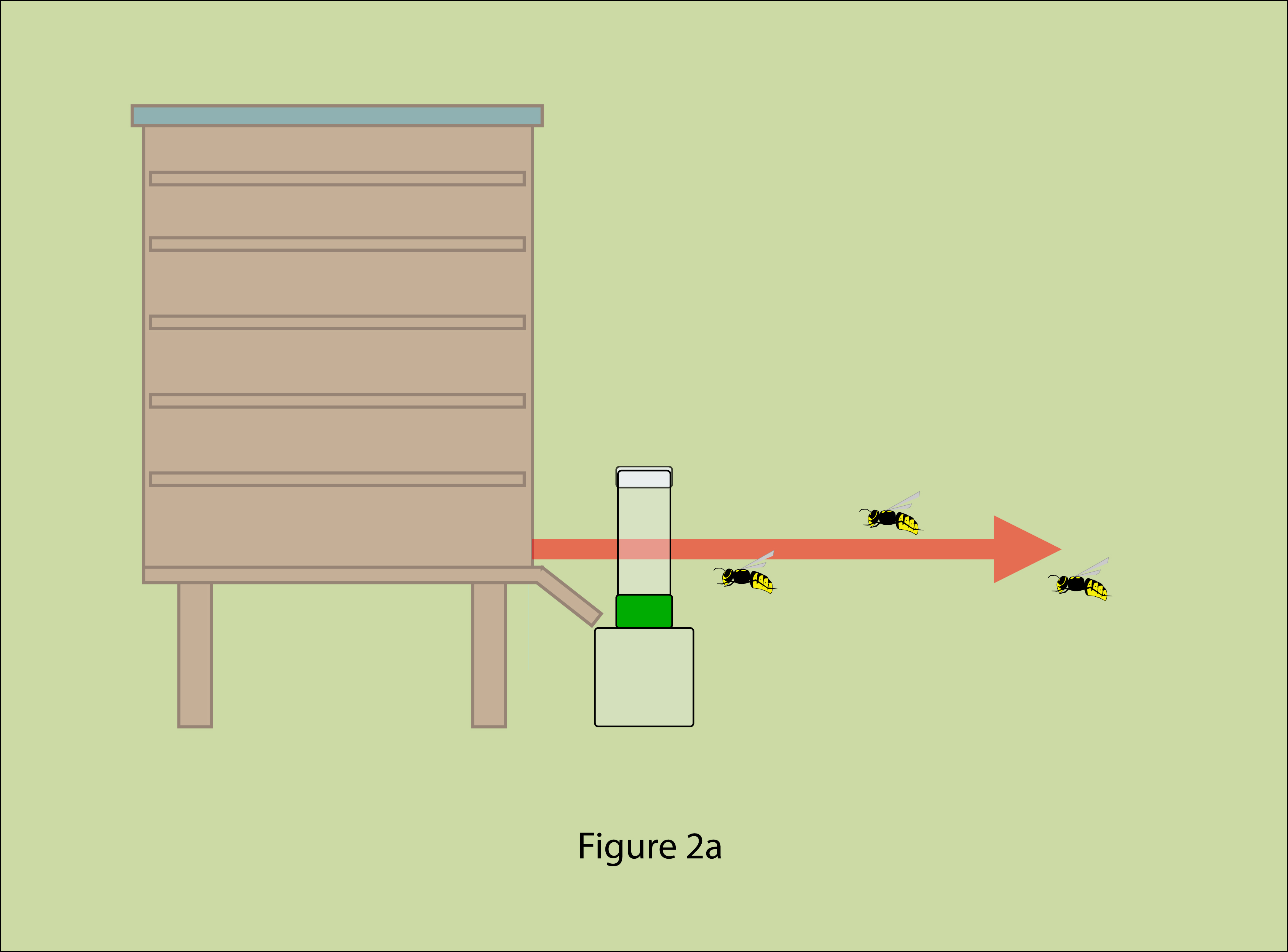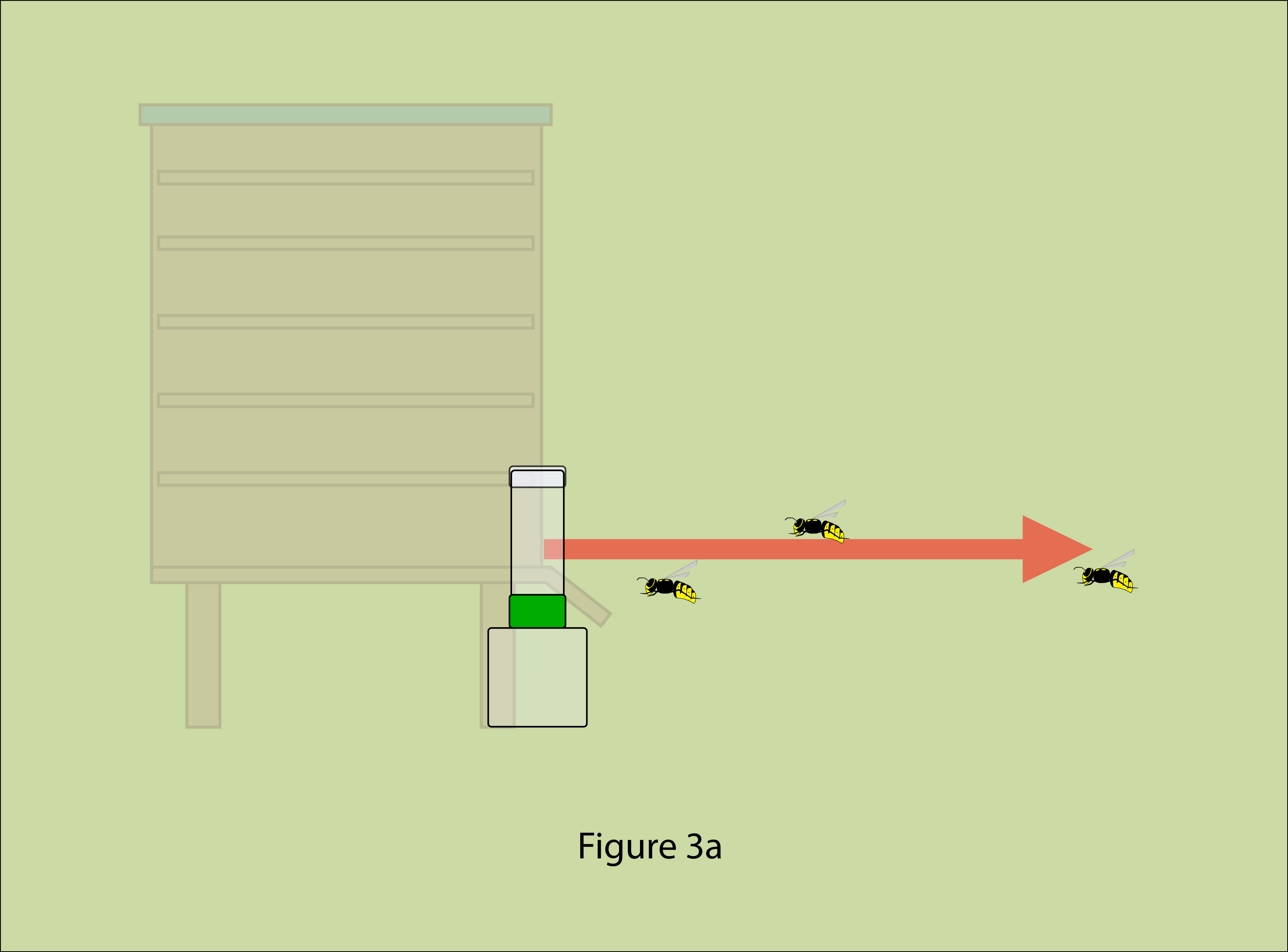When scouting wasps get access to food stores within a bee hive they will return to their nests to communicate the food source back to their colleagues who then join in the attack on the hive. This phenomenon is swarm feeding and represents a heightened level of risk to the bee hive. If not controlled swarm feeding can rapidly reach a tipping point where the hive is overwhelmed.
Wasps are efficient biological insects which means that they will not waste energy looking for alternative food sources once they have located one which means that wasps will tenaciously keep coming back to the same food source until it is fully consumed. This programmed feeding is very precise and wasps will navigate back to the same food source to within millimetres of its original geographical location. Most importantly, once wasps are programmed swarm feeding they will ignore all other food sources and this includes the WaspBane wasp trap.
Once wasps are swarm feeding on a bee hive static trapping will no longer suffice and new strategies will need to be used. Dynamic trapping as the name implies requires the movement of traps or food to exploit wasp programmed feeding behaviour. Essentially for such trapping to work the original programmed feeding behaviour must be interrupted and a WaspBane wasp trap placed in the original location of the food source.
In figure 1 below wasps are swarm feeding on a bee hive. They have learned where the entrance to the hive is and navigate directly and specifically to the entrance to the hive.
1 Hour Interruption Trapping
1 hour interruption trapping is a simple technique which can be used at the first signs of swarm feeding to knock the problem quickly on the head. In 1 hour interruption trapping the entrance to the hive is completely sealed and a WaspBane wasp trap is placed so that the entrance flutes to the trap are as close to the entrance to the hive as possible (see figure 2 and figure 2a).
Wasps will be prevented from entering into the hive and so will begin to seek an alternative food source at which point they become susceptible to capture by the WaspBane wasp trap. The hive needs to remain sealed for 1 hour because it takes approximately 1 hour for all programmed swarm feeding wasps to visit the hive.
CRITICAL: It is essential that the WaspBane wasp trap is primed before use during interruption trapping. The technique is demonstrated at about 2 minutes and 20 seconds into the video clip shown below.
After 1 hour the hive can be opened up again but the WaspBane wasp trap must be left in place to continue to provide protection through interception trapping. The hive must be carefully monitored and the process of 1 hour interruption trapping repeated if swarm feeding re-starts. There is a danger that in closing a bee hive the wasps already in the hive that are programme feeding will escape once the hive has been re-opened to communicate the location of the hive to more of their colleagues back at their nest so necessitating a repeat of the dynamic trapping process.
Hive Relocation Trapping
If swarm feeding persists despite several attempts at 1 hour interruption trapping then the level of programmed feeding interruption needs to be escalated. The simplest way to do this is to move the hive a distance of either less than three feet or more than three miles from its original location. Swarm feeding wasps will continue to return to the exact same location where the hive was originally before being moved. See figure 3 and figure 3a. Critically the WaspBane wasp trap has to be primed before use and must be deployed immediately that the hive is moved and accurately so that the entrance flutes to the WaspBane wasp trap are in exactly the same position that the entrance to the hive was before the hive was moved. Swarm feeding wasps will not follow the relocated hive and instead continue to look for the hive entrance where it should have been. Interrupting the programmed feeding in this way will make the swarm feeding wasps susceptible to being captured by the WaspBane wasp trap as they start seeking an alternative food source. 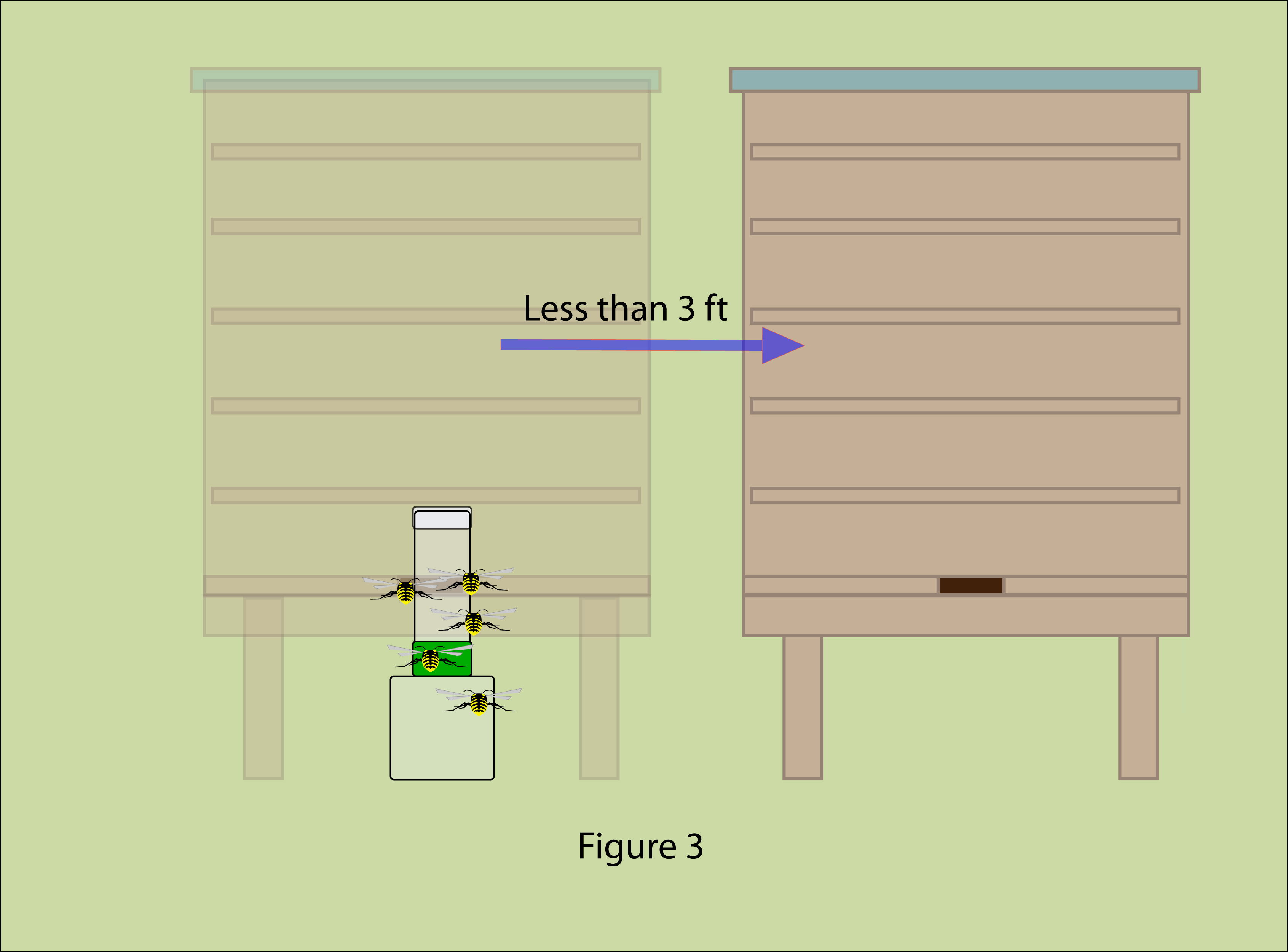
Swarm feeding wasps navigate to the hive using a mental map of landmarks situated around the hive. If swarm feeding progresses to frenzied feeding then wasps attacking the hive will be attracted by distress pheromones contaminating the hive. At this point wasps no longer rely on navigation by mental map. Instead they are drawn by the powerful aroma of the distress pheromones. When this happens then simply moving the hive and setting a WaspBane wasp trap will fail. Additional measures will need to be taken as described in the frenzied feeding section.

 Follow
Follow